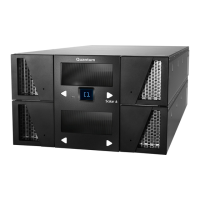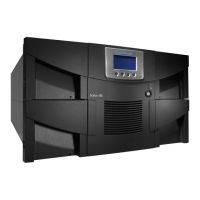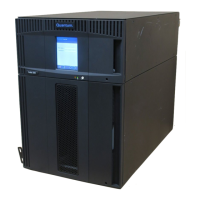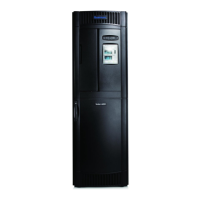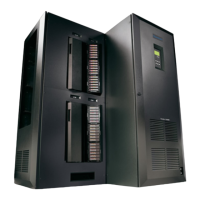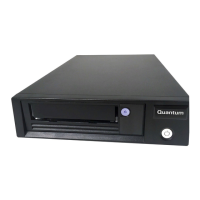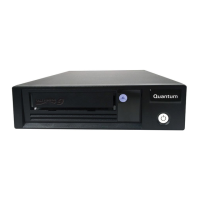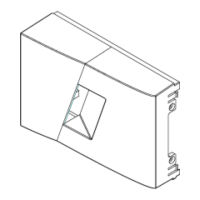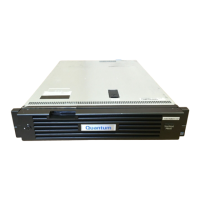Chapter 4 Configuring Your Library
Working With Partitions
Scalar i2000 User’s Guide 107
A partition consists of, at a minimum, one storage magazine and one
drive. Neither the storage magazine nor the drive can be shared with
another partition. Each partition is specific to a media type (for example,
LTO-1, LTO-2) and a drive interface (for example, SCSI or Fibre). One I/E
station can be used by up to four partitions. The maximum number of
partitions is determined by the lesser of the number of drives available in
the physical library (assuming there are at least as many storage slots) or
16.
Although the physical library can contain more than one media domain or
drive domain, you cannot have a mix of domain types within a partition
(for example, LTO and DLT). A single partition can have a mixture of
drive types and interface types within the same domain (for example,
LTO-1 and LTO-2 with SCSI or Fibre Channel interfaces).
Configuration controls, such as FC Host and SCSI Host, provide the
means to permit host access to a particular partition. Multiple hosts can
share a single partition, or a partition can be restricted to one exclusive
host.
Host applications control access to elements within the shared partition.
When hosts are connected directly to drives, this is true exclusively. When
the hosts connect through the MCB or an I/O blade, the library also has
access to partition elements, such as drives and media. Each application
can have a partition assigned to it. Each application uses its partition as if
it were a dedicated physical library.
Understanding Partition
Media Policy Settings 4
A partition's Media Type Checking, Media Checking Policy, and
Return Media Identifier settings help determine how the library handles
differing media types within the same library. You can configure media
policy settings when you manually create or modify a partition.
The key concepts regarding partition media policies are the media
domain, media type, media ID checking, and media identifier.
The library is licensed for either one partition or
the maximum number of partitions, which is 16.
For more information about partition licensing, see
Enabling Licenses on page 104.
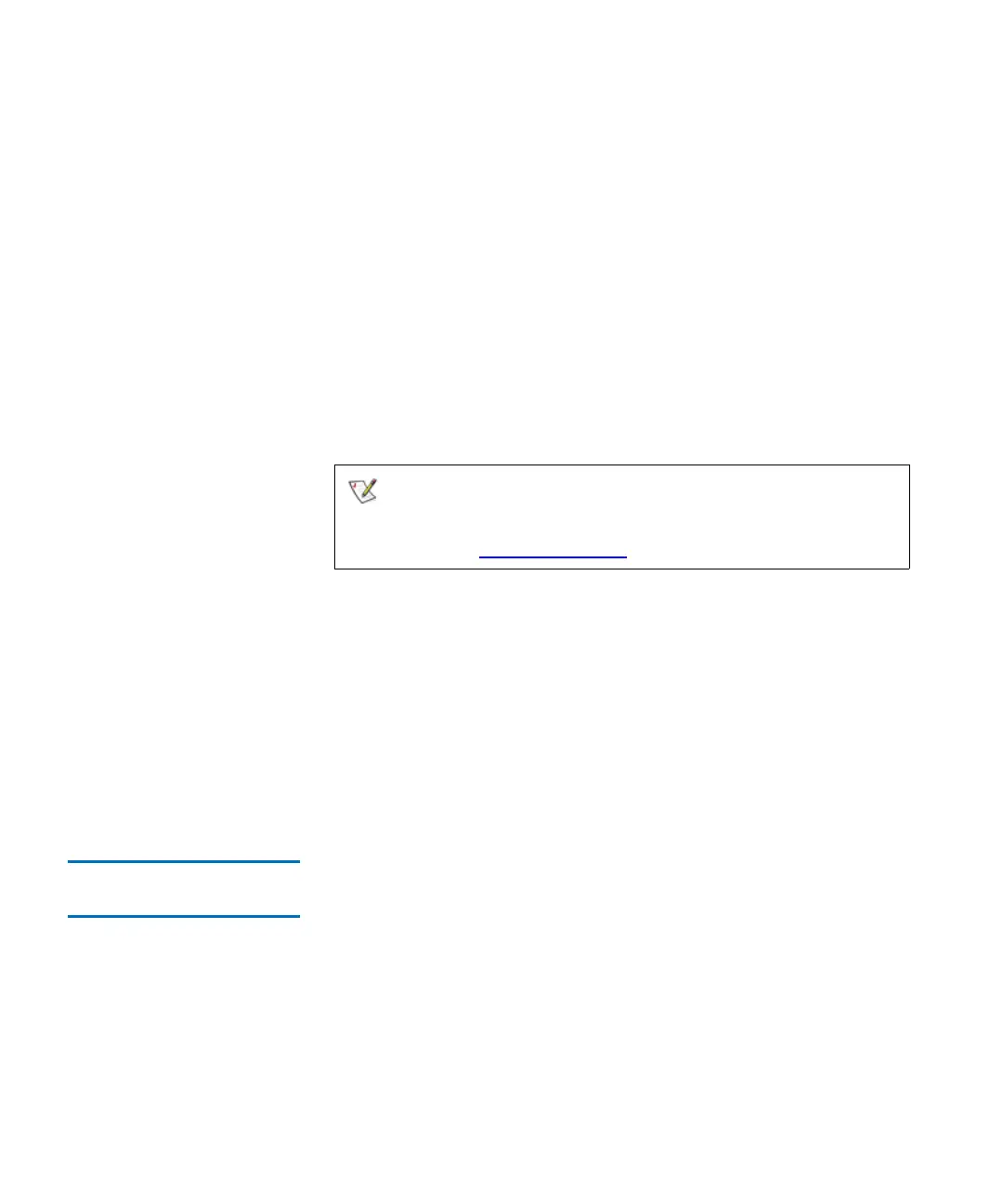